
Visit
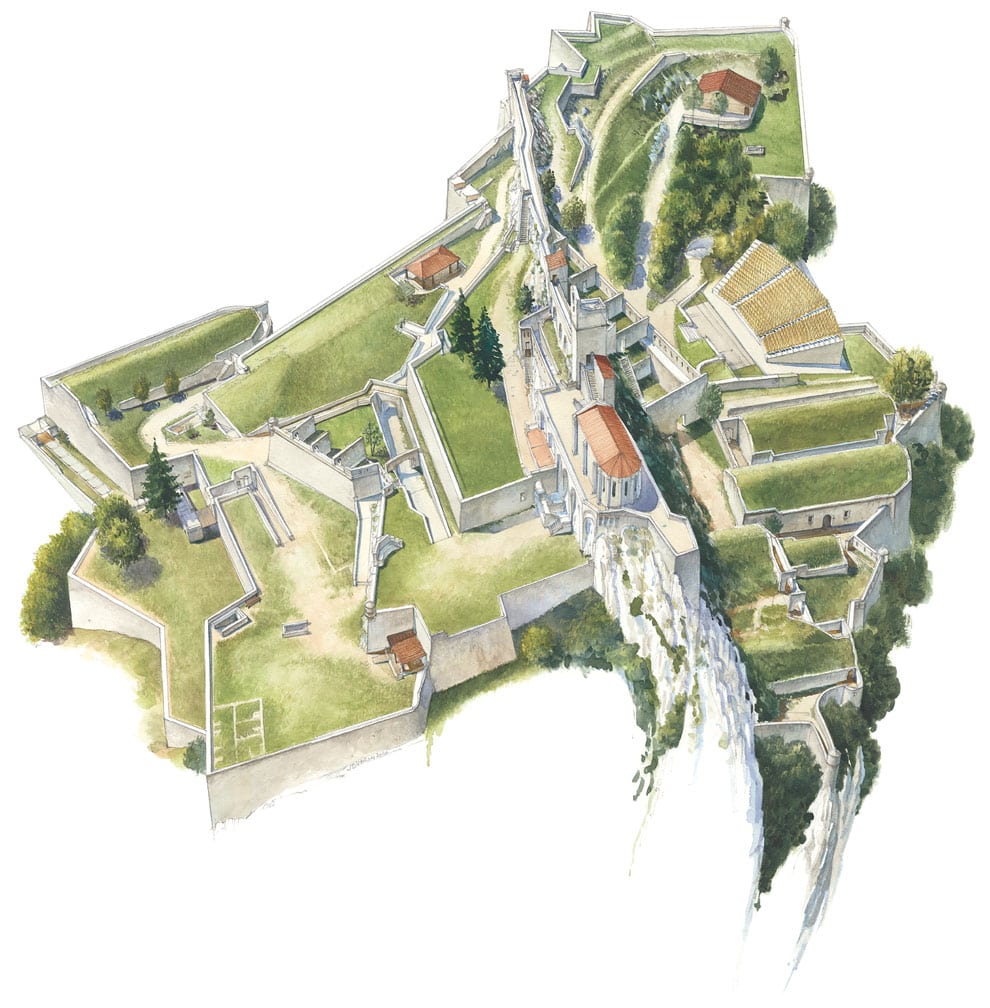
The "Vauban and his predecessors" exhibition
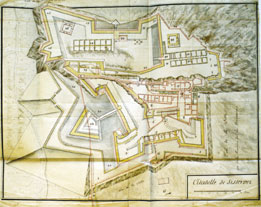
This exhibition, designed by historians Christian Corvisier and Isabelle Wermoes, takes visitors on a fascinating journey through fortification in the 16th century.e and the 17th centurye This exhibition, designed by the historians Christian Corvisier and Isabelle Wermoes, offers a fascinating journey into fortification in the 16th and 17th centuries. In seventeen thematic panels, it evokes the character of Vauban and his military genius in the light of the works of his predecessors. For the first time, the plans of the project conceived by Vauban for the Citadel of Sisteron and the city wall, considered as an integral part of the fortress, are presented. A booklet-game, offered to children, allows them to explore the exhibition in a more playful way.
The dungeon of John Casimir of Poland
The fate of this young Polish prince, who was imprisoned here on the orders of Richelieu from 23 February to 16 August 1639, is astonishing. After becoming King of Poland, he abdicated and returned to France where he ended his life in a cloister in Nevers.
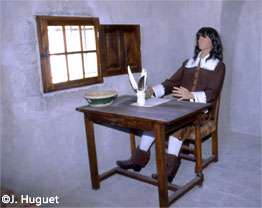
Horse-drawn vehicle exhibition
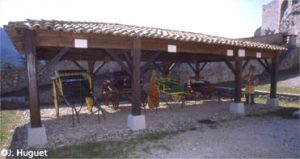
The exhibition presents some of the vehicles used to work in the fields or to travel on the roads of the countryside at the beginning of the last century. These vehicles include a forage wagon, a gardener, a tombereau, a horse-drawn carriage and a tilbury, not forgetting the donkey cart. A joyful discovery for children.
Horse-drawn vehicle exhibition

The exhibition presents some of the vehicles used to work in the fields or to travel on the roads of the countryside at the beginning of the last century. These vehicles include a forage wagon, a gardener, a tombereau, a horse-drawn carriage and a tilbury, not forgetting the donkey cart. A joyful discovery for children.
The museum
Two rooms present drawings, engravings, lithographs and photographs, evoking the Citadel through the ages and the people who have marked it. We can also see the weight of the old clock, set up at the top of the Keep in 1402, as well as one of the American bombs that devastated Sisteron and its Citadel in August 1944. In the first room, the sketches of Father de Martelange, architect of the Jesuit order's buildings, who came to Sisteron in 1604-05, give views of the Citadel and the city walls that are almost photographically accurate.
The Duke of Lesdiguières first took up arms here during the Catholic siege of the town in 1562. Prince Jean-Casimir Vasa, the future king of Poland, was imprisoned there by Richelieu in 1639. Vauban came there in the winter of 1692 and designed an ambitious project for it. Louis-Philippe and Napoleon III gave it its present appearance, making the necessary modifications to accommodate the progress of artillery.
La deuxième salle est entièrement consacrée au passage de Napoléon au retour de l’île d’Elbe. Jour après jour, heure par heure, la triomphale épopée nous est contée, depuis le débarquement à Golfe-Juan, le 1st mars 1815, jusqu’à l’arrivée à Lyon, le 10 mars. La Provence, royaliste, est hostile à l’empereur et la Citadelle de Sisteron est forte de ses 23 canons. Tout peut s’arrêter là et pourtant , au matin du 5 mars 1815, la Citadelle est sans poudre, Cambronne et ses 40 grenadiers occupent la ville, l’empereur peut y entrer… »
The film « Citadelle ! navire des Hommes... »
"Citadel, I built you like a ship, I nailed you down, rigged you up and then let you go in time, which is only a favourable wind. Citadel, the ship of men, without which they would miss eternity", wrote Antoine de Saint-Exupéry. With this magnificent film, directed by André Roman and Michel Jacob, 25 minutes are offered to the visitor's imagination. Like a stone ship set against petrified waves, the Citadelle invites us, through the voice of Jean-Claude Brialy, to cross the centuries and sail into eternity. Maria Casarès, Yehudi Menuhin, Patrick Dupond evoke the prestigious Nuits de la Citadelle, while Gérard Philippe climbs the steps of the fantastic underground staircase.
The Chapel
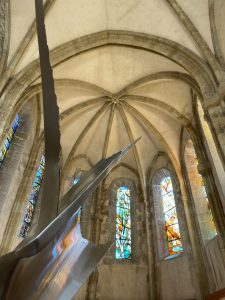
The Chapelle Notre-Dame du Château houses a permanent exhibition by Paul Maudonnet (1919 - 2010), a painter and engraver born in Lorient in 1919. His works are illuminated by the colourful stained glass windows of master stained glass artist Claude Courageux.
Paul Maudonnet studied engineering at the Ecole des Arts et Métiers in Angers.
In 1984, he co-authored the book "Sisteron et pays sisteronais" with Pierre Collomb (1920 - 2010).
There is a gift shop, with books on the region and postcards for visitors to take home with them as a souvenir of their climb up to the building.
The "Vauban and his predecessors" exhibition

This exhibition, designed by historians Christian Corvisier and Isabelle Wermoes, takes visitors on a fascinating journey through fortification in the 16th century.e and the 17th centurye This exhibition, designed by the historians Christian Corvisier and Isabelle Wermoes, offers a fascinating journey into fortification in the 16th and 17th centuries. In seventeen thematic panels, it evokes the character of Vauban and his military genius in the light of the works of his predecessors. For the first time, the plans of the project conceived by Vauban for the Citadel of Sisteron and the city wall, considered as an integral part of the fortress, are presented. A booklet-game, offered to children, allows them to explore the exhibition in a more playful way.
The dungeon of John Casimir of Poland
The fate of this young Polish prince, who was imprisoned here on the orders of Richelieu from 23 February to 16 August 1639, is astonishing. After becoming King of Poland, he abdicated and returned to France where he ended his life in a cloister in Nevers.

Horse-drawn vehicle exhibition

The exhibition presents some of the vehicles used to work in the fields or to travel on the roads of the countryside at the beginning of the last century. These vehicles include a forage wagon, a gardener, a tombereau, a horse-drawn carriage and a tilbury, not forgetting the donkey cart. A joyful discovery for children.
Horse-drawn vehicle exhibition

The exhibition presents some of the vehicles used to work in the fields or to travel on the roads of the countryside at the beginning of the last century. These vehicles include a forage wagon, a gardener, a tombereau, a horse-drawn carriage and a tilbury, not forgetting the donkey cart. A joyful discovery for children.
The museum
Two rooms present drawings, engravings, lithographs and photographs, evoking the Citadel through the ages and the people who have marked it. We can also see the weight of the old clock, set up at the top of the Keep in 1402, as well as one of the American bombs that devastated Sisteron and its Citadel in August 1944. In the first room, the sketches of Father de Martelange, architect of the Jesuit order's buildings, who came to Sisteron in 1604-05, give views of the Citadel and the city walls that are almost photographically accurate.
The Duke of Lesdiguières first took up arms here during the Catholic siege of the town in 1562. Prince Jean-Casimir Vasa, the future king of Poland, was imprisoned there by Richelieu in 1639. Vauban came there in the winter of 1692 and designed an ambitious project for it. Louis-Philippe and Napoleon III gave it its present appearance, making the necessary modifications to accommodate the progress of artillery.
La deuxième salle est entièrement consacrée au passage de Napoléon au retour de l’île d’Elbe. Jour après jour, heure par heure, la triomphale épopée nous est contée, depuis le débarquement à Golfe-Juan, le 1st mars 1815, jusqu’à l’arrivée à Lyon, le 10 mars. La Provence, royaliste, est hostile à l’empereur et la Citadelle de Sisteron est forte de ses 23 canons. Tout peut s’arrêter là et pourtant , au matin du 5 mars 1815, la Citadelle est sans poudre, Cambronne et ses 40 grenadiers occupent la ville, l’empereur peut y entrer… »
The film « Citadelle ! navire des Hommes... »
"Citadel, I built you like a ship, I nailed you down, rigged you up and then let you go in time, which is only a favourable wind. Citadel, the ship of men, without which they would miss eternity", wrote Antoine de Saint-Exupéry. With this magnificent film, directed by André Roman and Michel Jacob, 25 minutes are offered to the visitor's imagination. Like a stone ship set against petrified waves, the Citadelle invites us, through the voice of Jean-Claude Brialy, to cross the centuries and sail into eternity. Maria Casarès, Yehudi Menuhin, Patrick Dupond evoke the prestigious Nuits de la Citadelle, while Gérard Philippe climbs the steps of the fantastic underground staircase.
The Chapel

The Chapelle Notre-Dame du Château houses a permanent exhibition by Paul Maudonnet (1919 - 2010), a painter and engraver born in Lorient in 1919. His works are illuminated by the colourful stained glass windows of master stained glass artist Claude Courageux.
Paul Maudonnet studied engineering at the Ecole des Arts et Métiers in Angers.
In 1984, he co-authored the book "Sisteron et pays sisteronais" with Pierre Collomb (1920 - 2010).
There is a gift shop, with books on the region and postcards for visitors to take home with them as a souvenir of their climb up to the building.